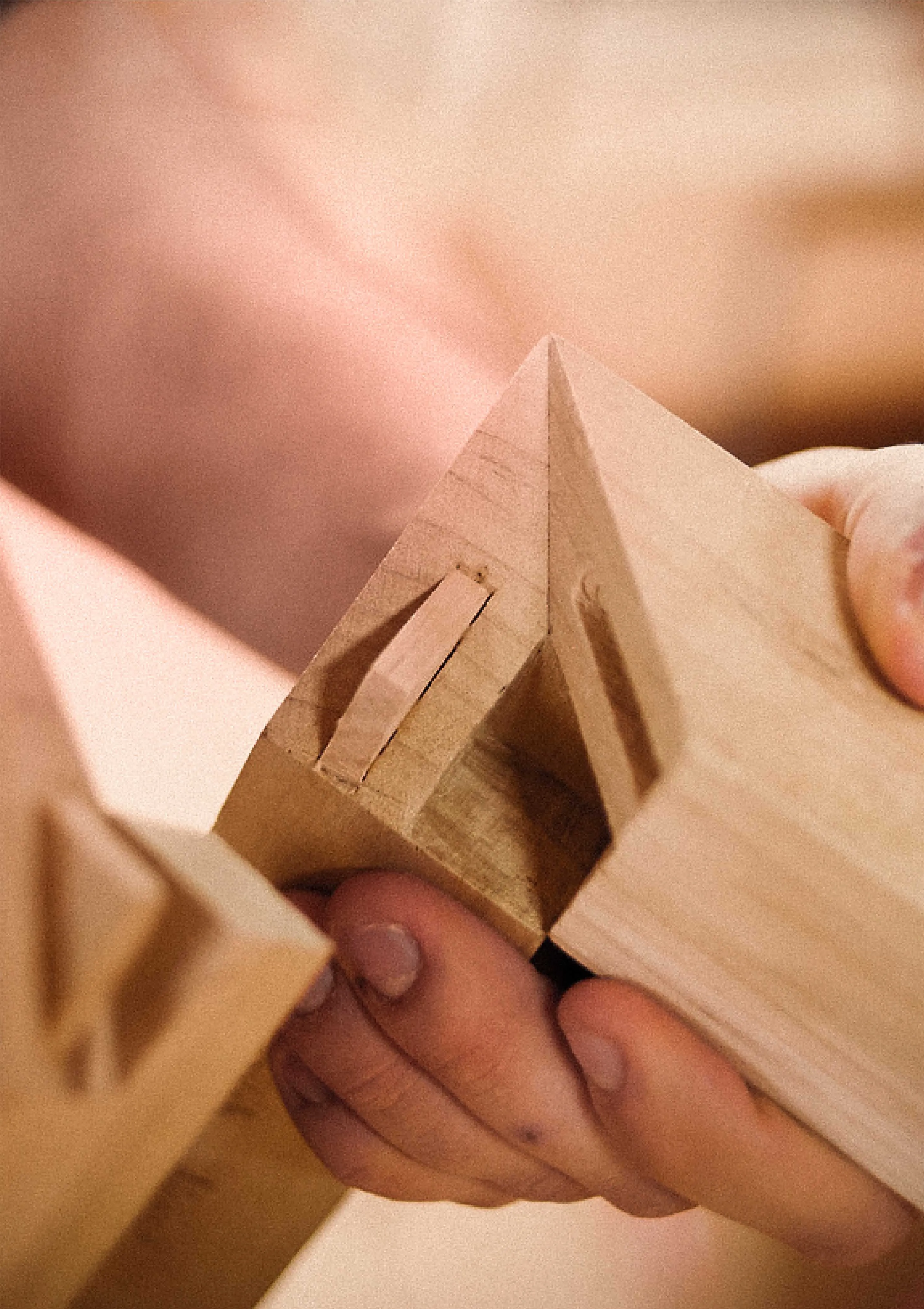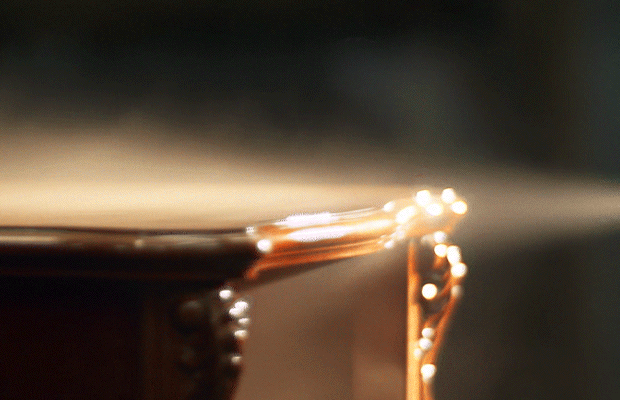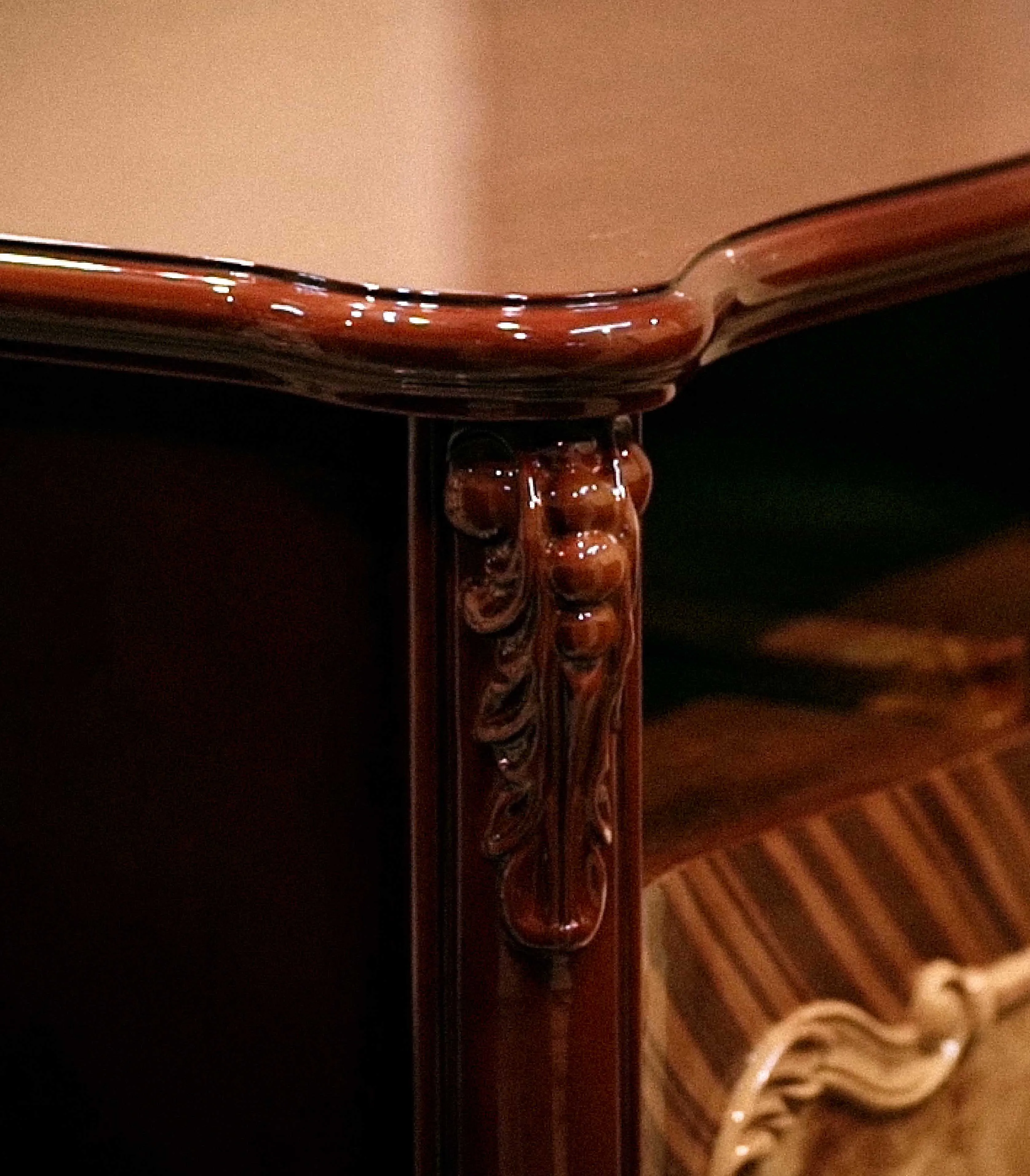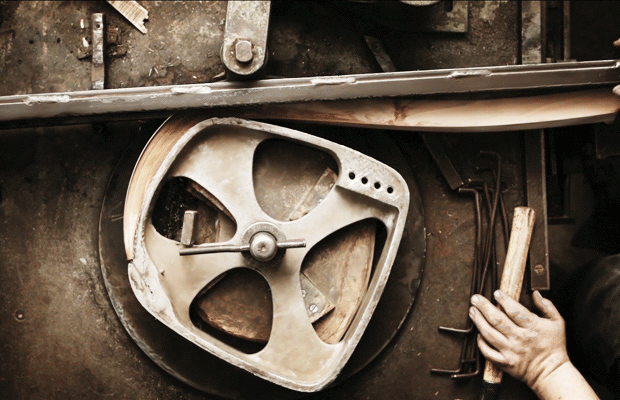
Mortise and tenon joints, as the soul of Chinese furniture, carry the wisdom and aesthetics of Eastern woodwork. FENNESSY adheres to traditional craftsmanship, with artisans operating purely by hand to fit the protruding tenons and recessed mortars seamlessly together. Each mortise and tenon is hand-chiseled with years of experience, fitting tightly and naturally without the need for a single nail or glue. It can remain as firm as ever for over a hundred years. Due to the diverse forms of connecting components, mortise and tenon joints have given rise to various combinations, achieving a harmoni-ous unity in structure and function, and also making woodwork more dynamic and full of vitality.

Fennessy is a pure hand-carved technique that integrates round carving, intaglio carving, openwork carving, through carving, and deep and shallow relief carving techniques. It goes through processes such as chiseling rough blanks, fine blanks, polishing, sanding, engraving hair, finishing, and coloring and polishing. Patterns representing auspicious meanings are selected, and the entire piece is carved from solid wood.

Gilding, also known as gilded lacquer, is a traditional Chinese art and craft. Originating from the Warring States Period, it is a decorative method of depicting patterns with gold on the surface of lacquerware.
The silver plating technique emerged during the European Renaissance. At that time, the noble class usually liked to apply silver plating on furniture, so it was usually Euro-pean-style furniture that underwent silver plating. When applying silver, it is important to highlight the contours of the lines and carvings. Often, silver is applied along the edges of the carvings to emphasize their layering.
Piano lacquer has very high requirements for the construction environ-ment, such as sealing, dust prevention, air purification and smooth air flow, as well as the density of the base material, the control of the variation of piano lacquer raw materials during the construction process, and the precision of the equipment for making piano lacquer.
It is made through multiple processes such as applying the base coat, pol-ishing and grinding, spraying the primer, spraying the topcoat, and high-temperature baking.。
The piano's lacquer color is transparent and clear, and its surface has a mir-ror-like high-gloss effect - just like the flatness of a glass mirror and the crystal-like texture. The surface hardness of the product components is high, and they have good wear resistance and weather resistance. Due to the complexity of the piano lacquer process and the extremely high cost of piano lacquer, this technique is generally only used in high-end industries such as mobile phones and automobiles.



A magical craft that involves cutting and embedding the texture or color differences of various types of wood into furniture to create exquisite painting or geo-metric patterns. Parquet and inlay have been a luxuri-ous furniture art form in Europe for hundreds of years. The royal and noble families regarded thin wood par-quet building materials as a symbol of status and taste. Traces of thin wood parquet furniture can be found in the Louvre in France, the British Museum in the UK, and the Uffizi Museum in Italy.

The leather and fabric coating technique is widely ap-plied to home textile products such as bed sets and sofas. Vanisi has introduced and improved this tech-nique to apply it to wooden furniture, breaking the framework and conventions, and using it for product decoration. By integrating historical and cultural ele-ments, it endows the products with more artistic ap-preciation and cultural depth.

The Fennessy hot bending Process Technology Depart-ment mainly focuses on hot bending of solid wood and glass. Wood bending is the process of softening wood, then bending it into the required curved shape under the action of the bending moment, and allowing it to dry and set. Wood cannot be softened by heating with fire, but it can be softened by steam. Hot-bent glass is a curved glass made by heating and bending high-quali-ty glass to soften it, forming it in a mold, and then an-nealing it to meet the high-quality demands of modern buildings. Hot-bent glass is generally processed in an electric furnace, and the processing cycle can last from several hours to ten or twenty hours.